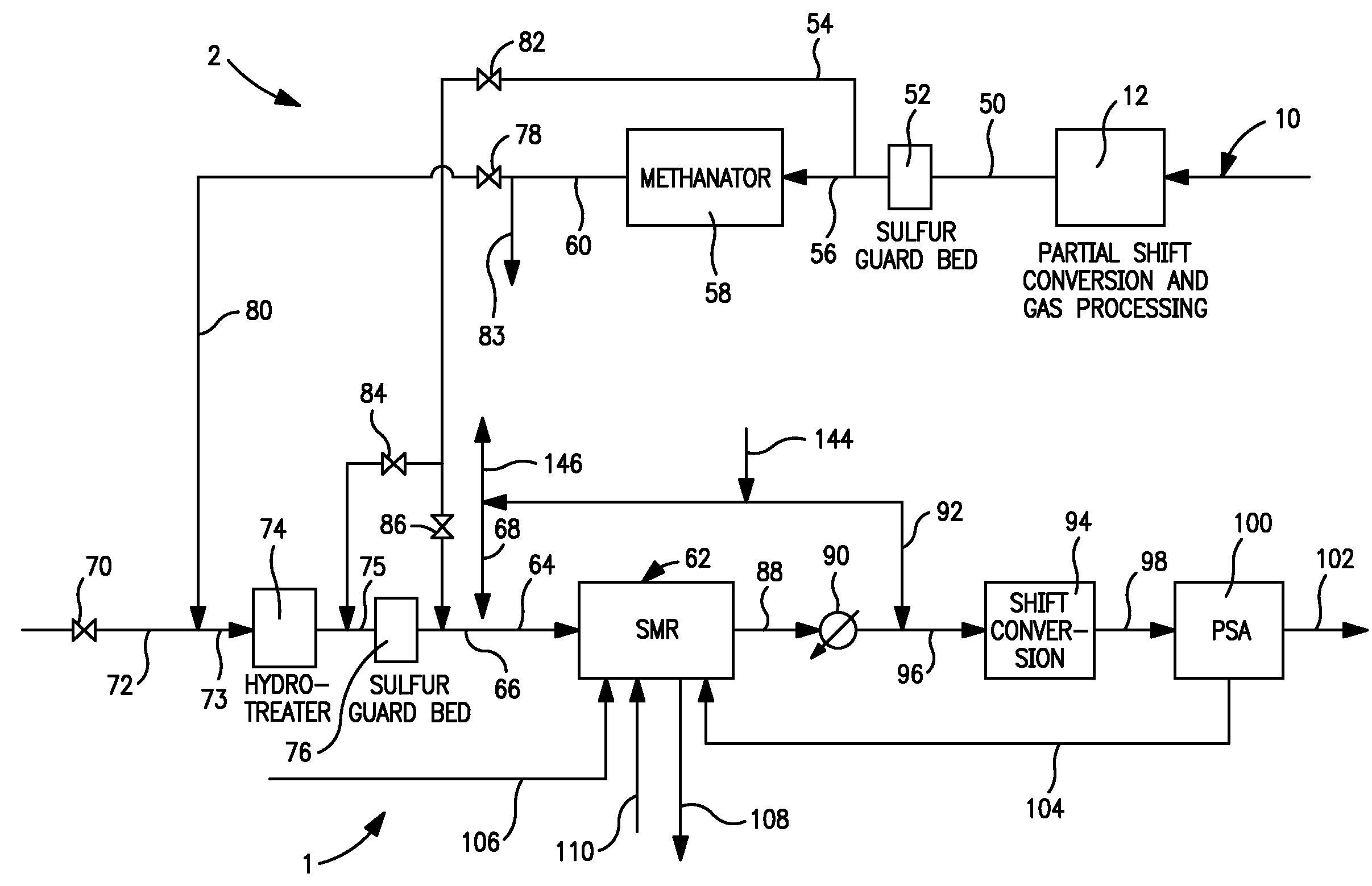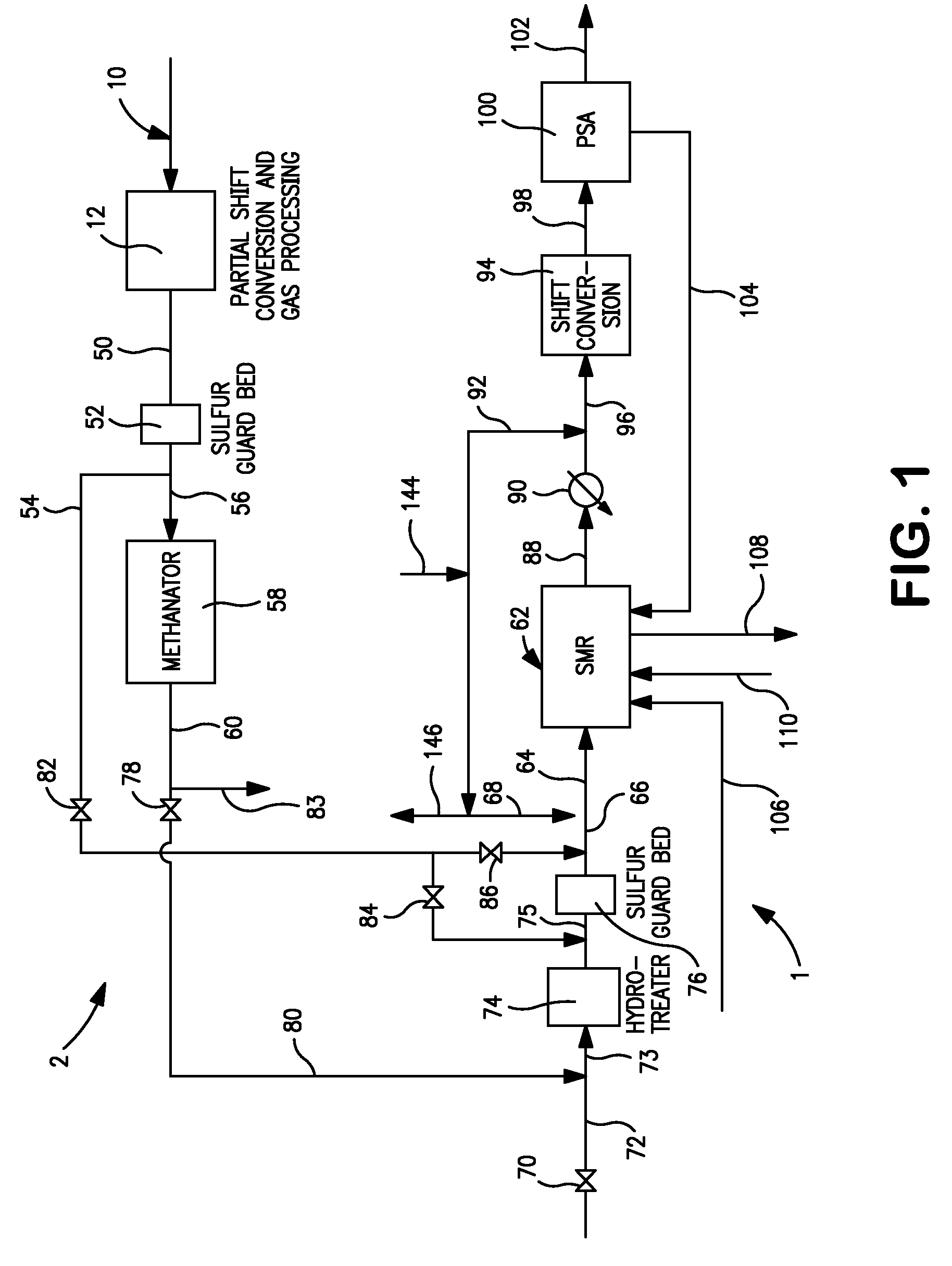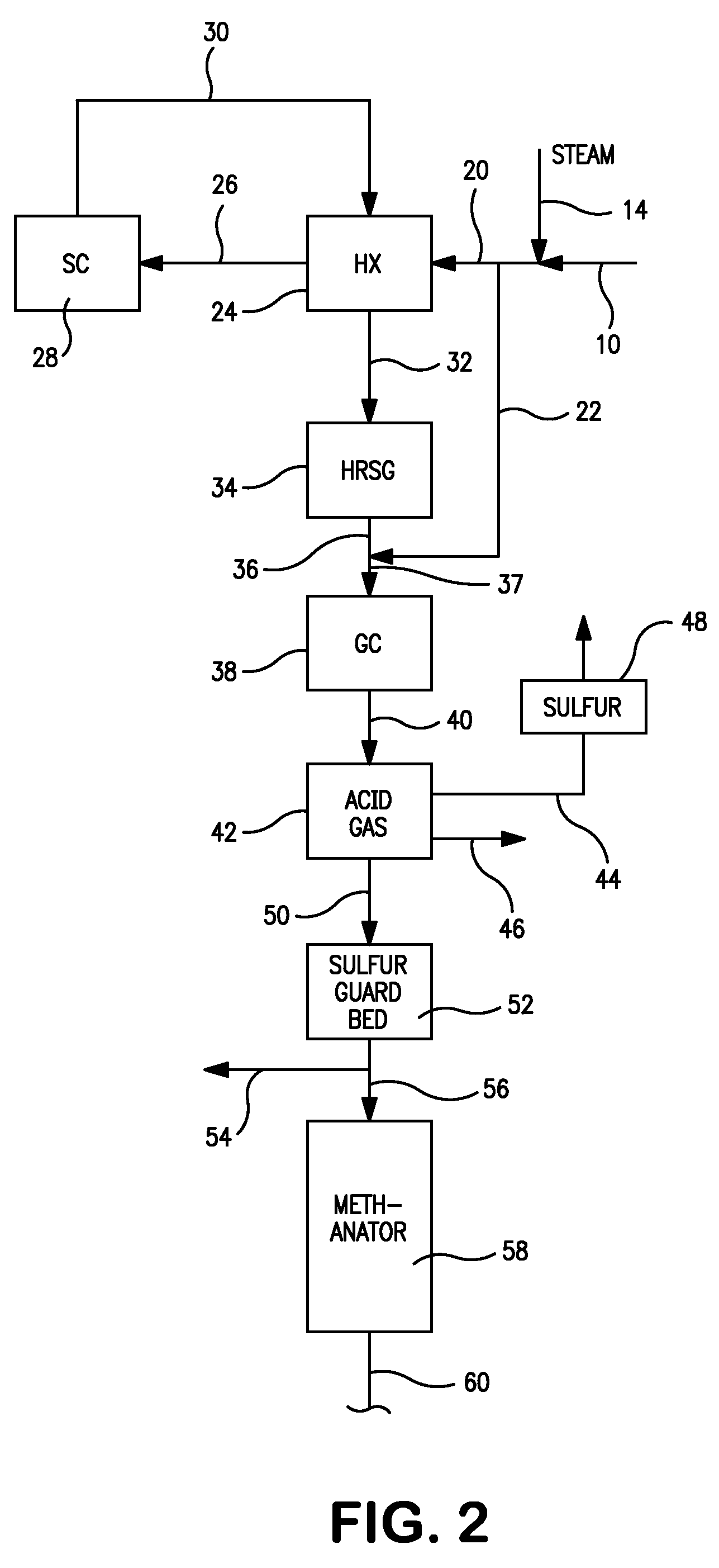Hydrogen production method
a hydrogen production and hydrogen technology, applied in the direction of combustible gas production, combustible gas catalytic treatment, chemistry apparatus and processes, etc., can solve the problems of lower process efficiency and increase in environmental impact, and achieve the effect of maximizing hydrogen production, less utilization of these gases, and constant steam flow ra
- Summary
- Abstract
- Description
- Claims
- Application Information
AI Technical Summary
Benefits of technology
Problems solved by technology
Method used
Image
Examples
case 7
[0061 generates maximum amount of steam because of the high amount of carbon dioxide in the synthesis gas feed that needs to be heated in the furnace section of the steam methane reformer and cooled subsequently. The seventh row shows the net energy consumption. Case 8 where the synthesis gas is taken after the carbon dioxide removal has the least energy consumption. All three cases have the same steam to carbon ratio when calculated without counting carbon monoxide as carbon. The ninth row shows the steam to carbon ratio when carbon monoxide is included in the carbon count. Case 1 has the least steam to carbon ratio as it has the highest carbon monoxide content in the synthesis gas fed to the steam methane reformer. The tenth row shows the oxygen content in the flue gas on a dry basis. The reformer absorbed duty is shown next. Case 7 has the highest duty among the three cases as this case has a high carbon dioxide content in the synthesis gas fed to the steam methane reformer that ...
PUM
| Property | Measurement | Unit |
|---|---|---|
| molar ratio | aaaaa | aaaaa |
| molar ratio | aaaaa | aaaaa |
| exit temperature | aaaaa | aaaaa |
Abstract
Description
Claims
Application Information
 Login to View More
Login to View More - R&D
- Intellectual Property
- Life Sciences
- Materials
- Tech Scout
- Unparalleled Data Quality
- Higher Quality Content
- 60% Fewer Hallucinations
Browse by: Latest US Patents, China's latest patents, Technical Efficacy Thesaurus, Application Domain, Technology Topic, Popular Technical Reports.
© 2025 PatSnap. All rights reserved.Legal|Privacy policy|Modern Slavery Act Transparency Statement|Sitemap|About US| Contact US: help@patsnap.com



